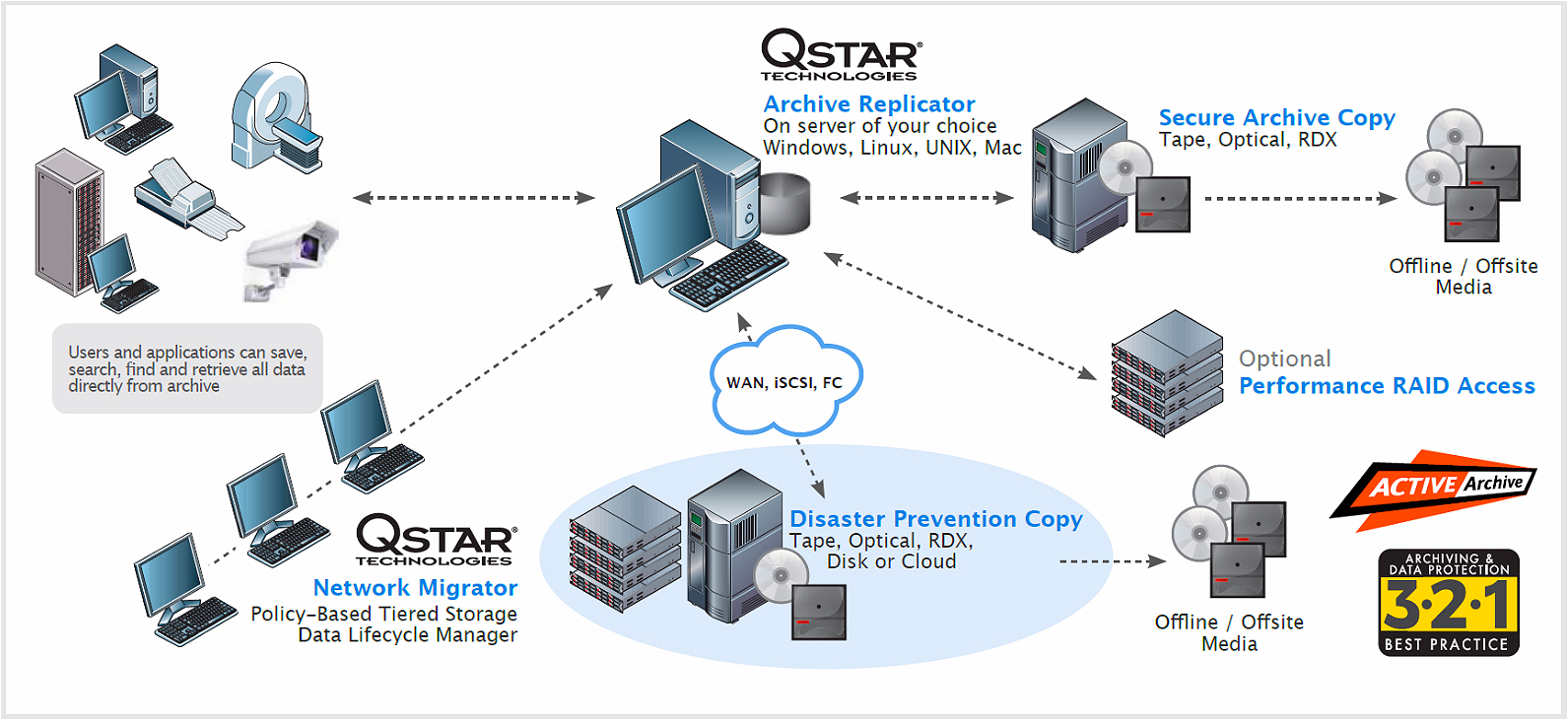
優利國際科技股份有限公司 Unixan International Technology Co.,Ltd.
 優利國際科技股份有限公司 Unixan International Technology Co.,Ltd. |
|
|
|
| Products |
 QStar Archive system
QStar Archive system
The main technology of QStar’s long-term data storage software is block-based synchronous mirroring technology. This technology has highly enhanced the risk-dealing prevention ability of archive management. According to different need and budget of risk-dealing prevention, this software provides clients with two options: write synchronously data into two media devices (in the same archive storage); or, write data directly into two different archive storages.
The features of DDR series:
Mirror writing eliminates the risk of data loss associated with a media failure. Tape and optical media is manufactured to very high standards but a media failure is still a possibility. If this were to happen, data could be lost. Typically, most administrators would create a second copy of data on another piece of media and remove it from the library, providing a disaster recovery copy.
Data Director provides a better solution. The software uniquely creates two synchronous mirrored copies, eliminating any issues associated with bad media. With Data Director 1, once both the primary and secondary media copies are full, the second can be removed and transported to an offsite location. In this way only a single copy is retained in the library, optimizing storage capacity.

DDR2 is mainly to mirror data to two different storage libraries. It’s important that these two libraries must use the same capacity media and technology. As the following picture shows, the storage library 2 can contain fewer hard drive slots with additional media removed and kept off-line.
DDR2 is more efficient than DDR1; when it breakdowns, user can still access into their database. When the software detects a simulated media failure, user can still write/mirror data to other well functional storage library. Once the repaired device reconnects, Data Director will automatically synchronize the data of two locations.

Data director 3’s feature is 2 servers and 2 libraries mirroring 2 media sets. Like DDR2, these two libraries must use the same capacity media and technology. As the following picture shows, the storage library 2 can contain fewer hard drive slots with additional media removed and kept off-line.
The difference between DDR1, 2 and DDR3 is that user can put storage libraries into two different locations. DDR3 uses WAN to back up data across multiple geographic locations. DDR3 is also more efficient than DDR1 in mirroring data. User can still access to database when it breakdowns. When the software detects a simulated media failure, user can still write/mirror data to other well functional storage library. Once the repaired device reconnects, Data Director will automatically synchronize the data of two locations.

Primary mirror on RAID uses simulated media. And, the storage library 2 can contain fewer hard drive slots with additional media removed and kept off-line.

The archiving experts at QStar understand that all archives are different. They need to fit into specific business environments and each has their own measurements for success. One organization’s archive may need fast restore, another may require offsite storage, and a third is looking for data immutability. Trying to find a single solution that fits all these and many more requirements has, in the past, been challenging.
QStar has created an archive platform that allows organizations to employ blends of storage technologies to fit their individual archive requirements and create a resilient, obsolescence free hybrid archive.
The feature of Archive Replicator:
